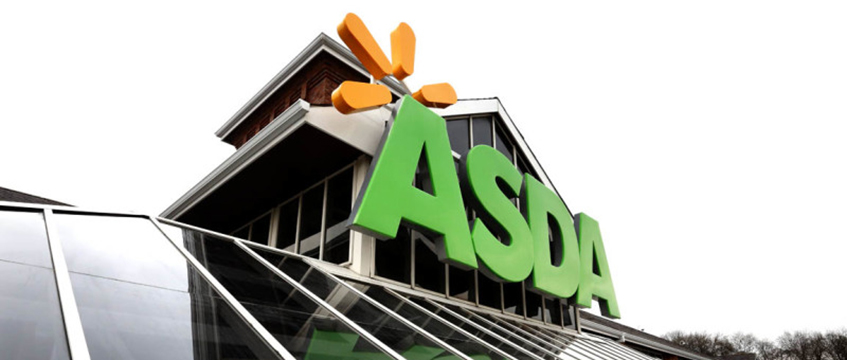Sainsbury’s may have said its proposed £12bn merger with Asda does not include any planned store closures, but analysis of the combined 2,800-store portfolio by Radius Data Exchange shows significant overlap, meaning scrutiny from the Competition & Markets Authority is likely.
Sainsbury’s boss Mike Coupe is adamant all Sainsbury’s and Asda stores will continue to trade but has acknowledged the “possibility” of some disposals after a CMA inquiry.
Radius Data Exchange analysis has found that 23% of Asda stores and 12% of Sainsbury’s stores lie within 1km of each other.
The data shows that 142 of Asda’s 605 stores fall within a 1km radius of a Sainsbury’s store, excluding Asda petrol stations and pick-up locations.
Concurrently, a total of 174 Sainsbury’s stores lie within a 1km radius of an Asda store.
The two supermarkets have a combined portfolio totalling more than 118m sq ft (including Argos outlets, acquired by Sainsbury’s in 2016).
The two chains said a combined group would “reduce Sainsbury’s lease-adjusted leverage, benefiting from Asda’s freehold property ownership.”
Asda’s portfolio is mostly freehold. It owns the freehold on around 75% of its stores. Sainsbury’s estate is around 50% leasehold. The supermarket has a joint venture with British Land, which leases around 19 superstores back to the retailer.
Store sizes at the two supermarkets are similar, although Asda stores are slightly smaller than Sainsbury’s shops on average.
Potential ramifications
However, according to EG retail analyst James Child, that is where the similarities end.
He said: “The physical portfolios of both supermarkets are very different.
“Sainsbury’s has its local stores which operate as its convenience offer in city and town centres, while Asda still predominantly operates out of typical and traditional larger big-box supermarkets.
“Geographically we can see that difference in location too, with Asda dominating northern areas while Sainsbury’s has a dominance in the South East.
“Potential ramifications of the merger could create various opportunity areas if there are store closures in the distant future. Landlords could be at risk of having to fill a huge amount of empty space – and filling those vacant stores with tenants may become problematic.
“With the imminent closures of many other ‘big-box’ retailers such as Toys R Us, Carpetright and Mothercare, space could be left empty for some time.
He said with many value and homeware brands already eating up space from the BHS collapse in 2016, there may simply be too much space on the market, especially when taking into account the development pipeline of new space, which is set to top 27m sq ft by the end of 2022.
“The opportunity could present itself to apply for change of use, perhaps to leisure, or even demolition and the addition of residential units,” he said.
James Watson, head of retail capital markets at Colliers International, noted that in the event of closures, demand from retailers for vacant secondary stores would be “weak” given current market conditions.
Consequently, Watson predicted the sites were “likely to be redeveloped into mixed-use, residential-led schemes”.
Stephen Springham, head of retail research at Knight Frank, said there “will inevitably be some store disposals”, although he was keen to distance these from store closures as they would just be the transfer of ownership to other operators.
Opportunities for growth
The proposed merger is expected to generate £75m from property “opportunities”, including more Argos outlets in Asda stores.
Coupe said there was scope to set up around 250 Argos shop-in-shops at Asda, the same number in Sainsbury’s stores.
There are no proposed changes to their respective head office operations. Asda’s HQ will remain at Asda House in Leeds, while Sainsbury’s will be run from 33 Holborn, EC1.
Asda operates 584 standalone grocery stores, 33 Asda Living stores and 18 petrol stations. Meanwhile, Sainsbury’s has more than 600 supermarkets and more than 800 Sainsbury’s Local convenience stores, with a further 800 Argos stores.
‘Logistics will be the biggest hurdle’
When the story emerged around Asda’s proposed tie-up in the UK with Sainsbury’s, some saw this as a retrenchment enabling Asda’s US owner, Walmart, to focus on home turf, writes Nichola Silveira, general manager logistics, DP World UK.
Asda, which Walmart acquired for £6.9bn in 1999, has around 600 UK stores, including 339 superstores – big-box, out-of-town mega-domes that are increasingly lying empty across the country. Sainsbury’s has around 1,400 stores. Real estate is by far the biggest asset these companies have. And while disposing of surplus stores will be relatively easy, integrating the chains’ logistics platforms will be harder to solve.
For retailers in the age of omnichannel, the supply chain is where efficiencies are gained and value created. Their real estate holdings and the supply chains that cater for them are inefficient but are still a vital part of their profit and structure.
Realigning how they move goods from A to B will take bravery but will ultimately give them a competitive advantage.
The new management team will have to scrutinise every aspect of their supply chain legacy, identifying where inefficiencies can be squeezed out and where new gains can be made.
The victors will be the ones that scrutinise their legacy networks, compress their operations, embrace cutting-edge technology and choose the right logistics partners.
To send feedback, e-mail pui-guan.man@egi.co.uk or tweet @PuiGuanM or @estatesgazette











